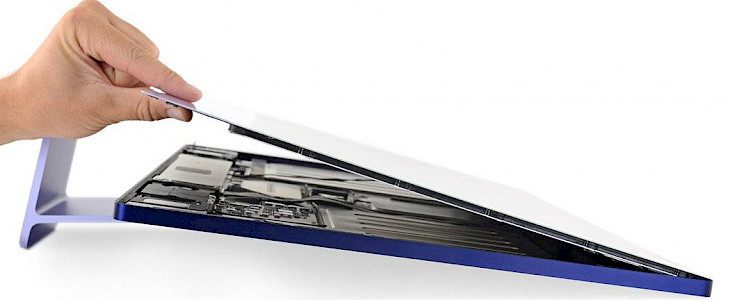
Last Friday, Apple began shipping the first M1 iMac models to consumers and starting selling them in shops, and iFixit has started one of its standard teardowns on the new machines.
The mid-tier purple iMac model with 8GB RAM and 8-core CPU/GPU is being dismantled by iFixit.
The standard iMac has a single cooling fan and a heat sink, whereas the higher-end 8-core GPU versions have two fans and a heat pipe, as well as heat sinks. Because the two machines have separate cooling systems, this model's internals will look different from the internals of the 7-core GPU base model. So if you have a 7-core GPU iMac, expect the internals to look different.
The deconstruction begins with a comprehensive x-ray, which is always entertaining to look at because it allows us to see the inside components without having to open the computer.
Inside the Apple logo, there are two primary metal plates and an RF passthrough for antenna hardware.
The iMac is sealed using "traditional iMac glue," according to iFixit, which isn't as gloopy and difficult to work with as Apple's glue for items like the iPad.
The iMac's front is a single piece of glass, so there's no separate front to the chin that prevents access to the internals like previous generations.
The logic board is housed in the chin, and two fans are blowing inward. The M1 is cooled by a copper heat pipe and two short heatsinks.
The logic board includes SK Hynix memory, Kioxia NAND flash storage, and an Apple-designed M1 SoC, Bluetooth/WiFi module, and power management IC, among other components, according to iFixit.
A "mystery button" with three LEDs beneath it, according to iFixit, will be disclosed later. iFixit also intends to release Magic Keyboard Touch ID sensor information, speaker information, and a repairability score.
The iFixit takedown won't be finished until tomorrow, but MacRumors readers who want to view inside the iMac may keep track of fresh components and details on the iFixit website.
Update: Part two of iFixit's breakdown is now complete, giving us a thorough look inside the iMac, the Touch ID Magic Keyboard, and the power supply.





